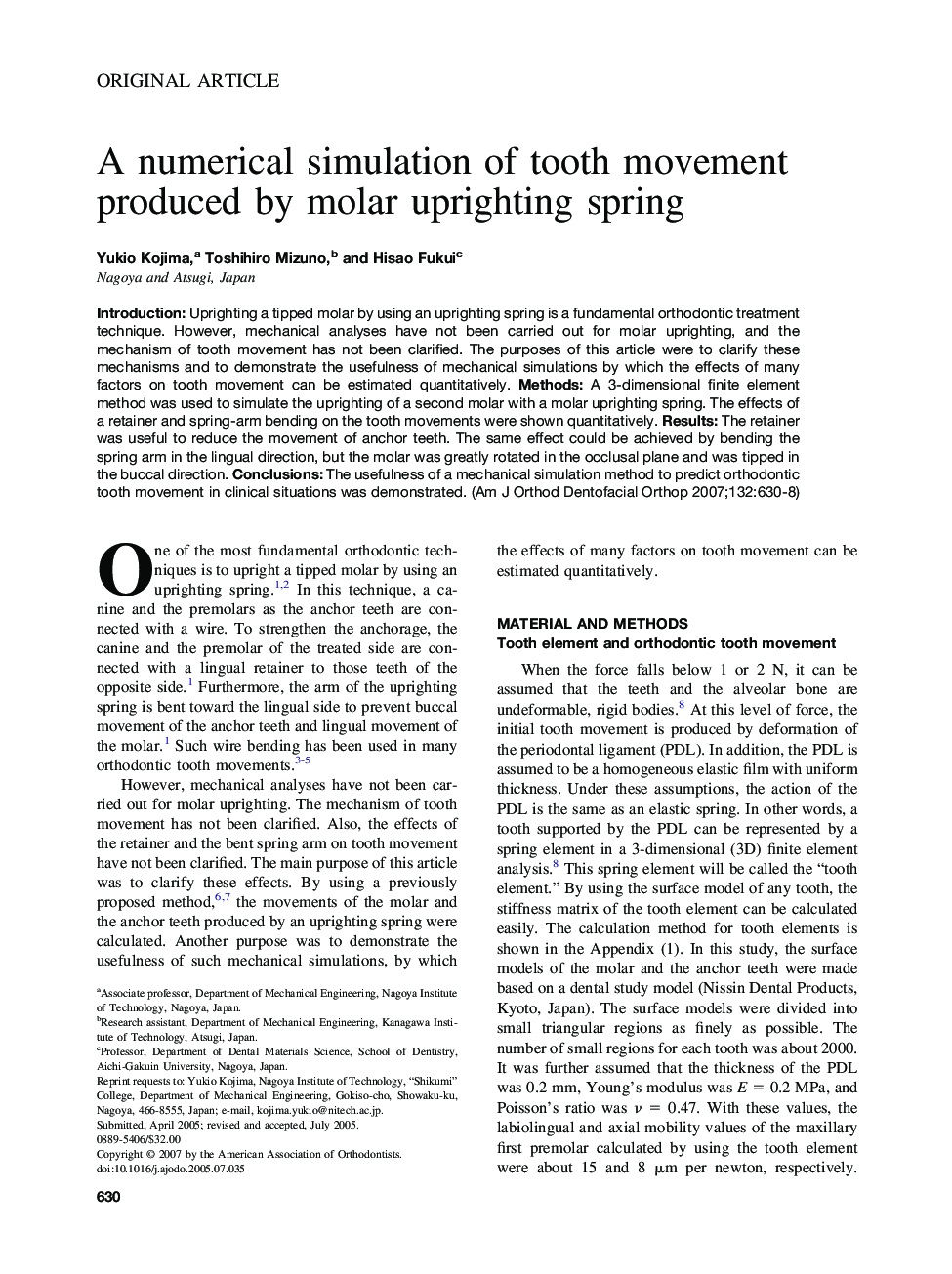| Article ID | Journal | Published Year | Pages | File Type |
|---|---|---|---|---|
| 3119670 | American Journal of Orthodontics and Dentofacial Orthopedics | 2007 | 9 Pages |
Introduction: Uprighting a tipped molar by using an uprighting spring is a fundamental orthodontic treatment technique. However, mechanical analyses have not been carried out for molar uprighting, and the mechanism of tooth movement has not been clarified. The purposes of this article were to clarify these mechanisms and to demonstrate the usefulness of mechanical simulations by which the effects of many factors on tooth movement can be estimated quantitatively. Methods: A 3-dimensional finite element method was used to simulate the uprighting of a second molar with a molar uprighting spring. The effects of a retainer and spring-arm bending on the tooth movements were shown quantitatively. Results: The retainer was useful to reduce the movement of anchor teeth. The same effect could be achieved by bending the spring arm in the lingual direction, but the molar was greatly rotated in the occlusal plane and was tipped in the buccal direction. Conclusions: The usefulness of a mechanical simulation method to predict orthodontic tooth movement in clinical situations was demonstrated.
